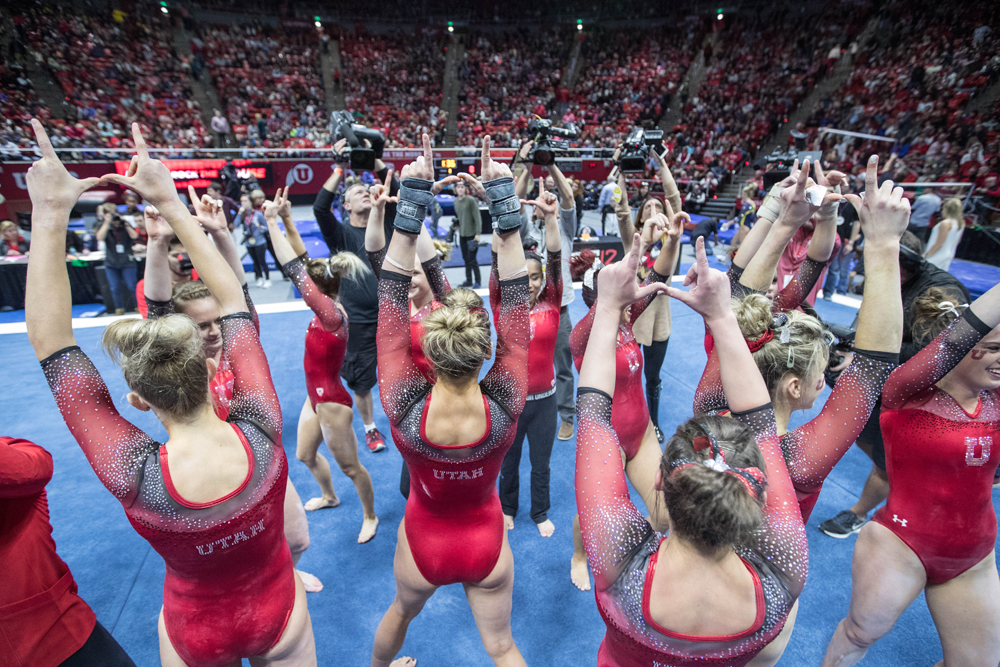Utah’s Pac-12 journey dates much farther back than that sunny July 2011 afternoon of balloons and roses when conference membership became official. The odyssey that would bring Utah into the Conference of Champions began nearly 30 years ago.
In 1987, Chris Hill was named the U’s athletics director, taking the reins of a department in dire need of improvement. While the skiing and women’s gymnastics programs carried the university banner with six national championships each in the 1980s, and women’s softball reached the NCAA College World Series twice in that decade, higher profile sports languished. The football program went a combined 73-94-3 during the 15 years before Hill’s promotion while the men’s basketball team hadn’t won an NCAA Tournament game in five years. Through coaching hires and facility improvements, Hill began leading Utah on its lonely climb toward national relevance.
“When we got started, we determined that we had to make step after step after step,” Hill recalls. “We knew that we had to raise money. We challenged ourselves to become a better program competitively, and with that came finances and facilities.”
The hiring of Rick Majerus and Ron McBride led to deep tournament runs for men’s basketball and bowl berths for football throughout the 1990s. Skiing and gymnastics maintained their powerhouse status while women’s basketball and volleyball became consistent winners. Though Utah’s sphere of athletic influence remained relegated to the intermountain west, dreams of something bigger quietly began to stir within the athletics department.
A decade into the job at Utah, Hill eyed the Conference of Champions and aimed for a target that must have seemed impossibly far away. “In the mid to late 1990s, we set a goal saying we really need to be in the Pac-10, which is now 12,” Hill says. Standing pat would mean falling behind. Tectonic shifts, largely driven by college football, began to shake the collegiate athletics landscape. With the major conferences expanding and generating massive revenue from television contracts, Utah had only one shot at joining the upper echelon: become as attractive as possible and hope the Pac-10 eventually calls. “We wanted to make sure we got dressed up nice and got asked to go to a dance,” Hill says.
In hoping for that call, Utah controlled what it could on the field and the court. Between 1998-2009, the Utes won two BCS bowls in football, earned a Final Four trip in men’s basketball, reached the Elite 8 in women’s hoops, finished second nationally four times in women’s gymnastics, made 10 NCAA tournament appearances in women’s volleyball and five in women’s soccer, claimed a MWC tournament title in baseball, and captured a national championship in skiing. Utah began looking the part of a major conference program.
Even as Utah flexed its athletic muscles in hope of an invitation, the university had long been noticed for its brains. This gave Utah an advantage in seeking Pac-10 inclusion.
“There is no doubt that the academic strength of the university was very important in the selection process,” University of Utah President David Pershing says. “In 2010, as it is today, the U ranked among the top 100 universities in the world and among the top public research universities in the nation.” League membership involves more than just athletic affiliation. Scholars collaborate and exchange ideas across the conference, while universities share academic resources. Utah’s reputation as an outstanding research institution lent credibility to the school’s Pac-12 candidacy.
—James Seaman BA’01 BS’01 MA’07 is a freelance writer based in Salt Lake City.
Read a more comprehensive feature on the U’s road to the Pac-12 in the previous Continuum piece “Getting in the Game.”

One thought on “The Long Road to Being Conference-Ready”